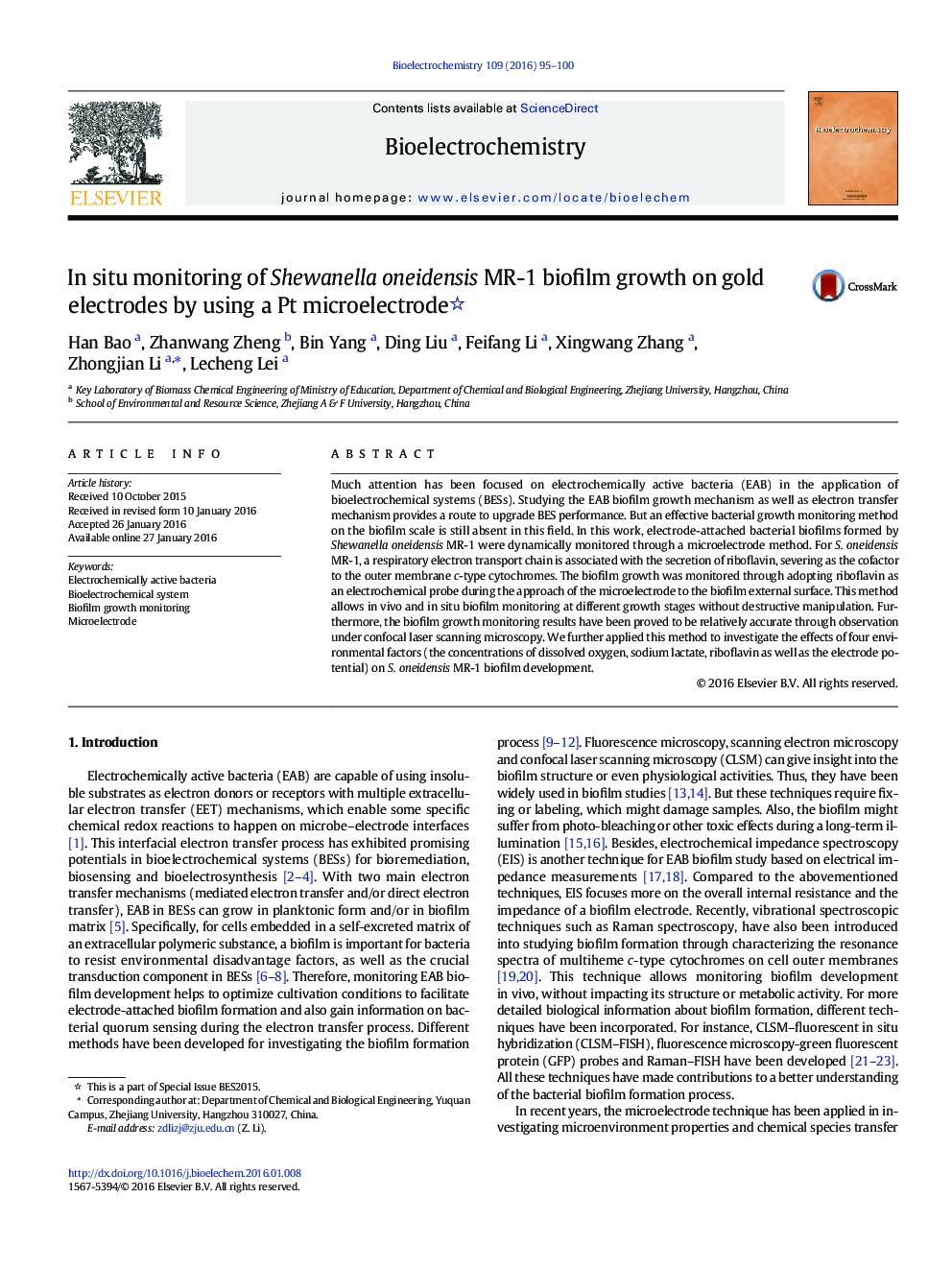| Article ID | Journal | Published Year | Pages | File Type |
|---|---|---|---|---|
| 7704974 | Bioelectrochemistry | 2016 | 6 Pages |
Abstract
Much attention has been focused on electrochemically active bacteria (EAB) in the application of bioelectrochemical systems (BESs). Studying the EAB biofilm growth mechanism as well as electron transfer mechanism provides a route to upgrade BES performance. But an effective bacterial growth monitoring method on the biofilm scale is still absent in this field. In this work, electrode-attached bacterial biofilms formed by Shewanella oneidensis MR-1 were dynamically monitored through a microelectrode method. For S. oneidensis MR-1, a respiratory electron transport chain is associated with the secretion of riboflavin, severing as the cofactor to the outer membrane c-type cytochromes. The biofilm growth was monitored through adopting riboflavin as an electrochemical probe during the approach of the microelectrode to the biofilm external surface. This method allows in vivo and in situ biofilm monitoring at different growth stages without destructive manipulation. Furthermore, the biofilm growth monitoring results have been proved to be relatively accurate through observation under confocal laser scanning microscopy. We further applied this method to investigate the effects of four environmental factors (the concentrations of dissolved oxygen, sodium lactate, riboflavin as well as the electrode potential) on S. oneidensis MR-1 biofilm development.
Related Topics
Physical Sciences and Engineering
Chemistry
Electrochemistry
Authors
Han Bao, Zhanwang Zheng, Bin Yang, Ding Liu, Feifang Li, Xingwang Zhang, Zhongjian Li, Lecheng Lei,
